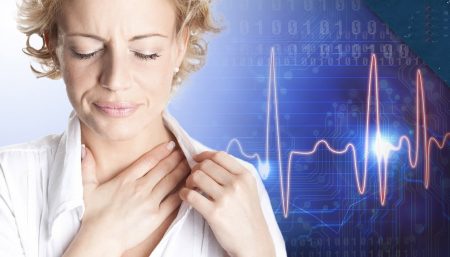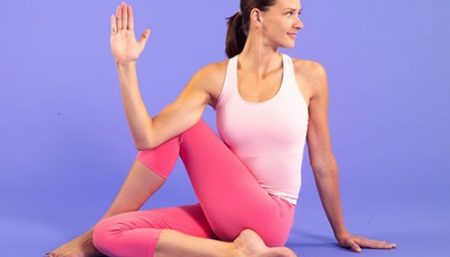Heartburn or Gastroesophageal Reflux Disease (GERD) means acid indigestion. This occurs when the lower esophageal sphincter (LES) does not close properly and the stomach contents reflux or return into the esophagus. This may create a burning sensation in the chest or throat when the refluxed stomach acid touches the lining of the esophagus. The burning sensation is the one called Heartburn.
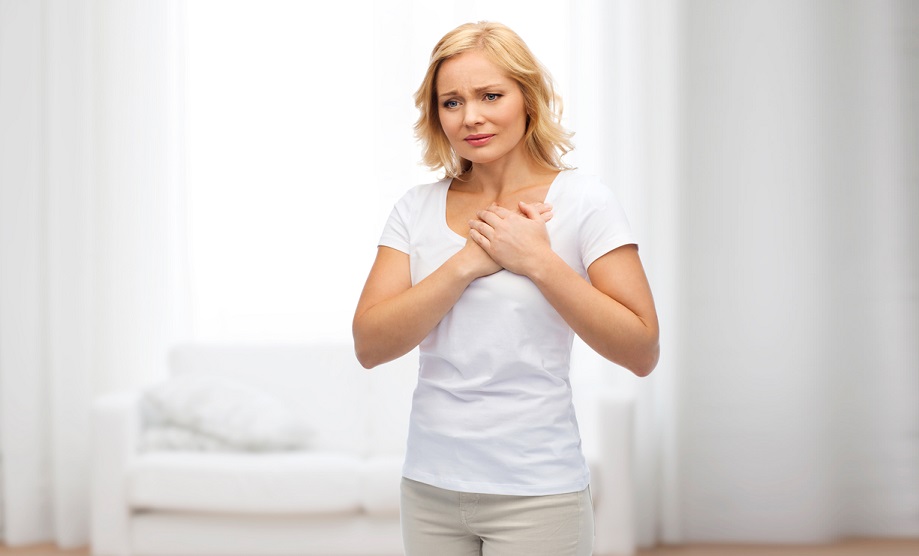
Check out the following asanas beneficial in management of heartburn
Easy Pose (Sukhasana)
This pose open the hips, lengthens the spine and promotes inner calm.
- With the buttocks on the floor, cross the legs, placing the feet directly below the knees. Rest the hands on the knees with the palms facing up.
- Press the hip bones down into the floor and reach the crown of the head up to lengthen the spine. Drop the shoulders down and back, and press the chest towards the front of the room.
- Relax the face, jaw, and belly. Let the tongue rest on the roof of the mouth, just behind the front teeth.
- Breathe deeply through the nose down into the belly. Hold as long as comfortable
Cat Pose (Bidalasana)
Cat Pose teaches you to initiate movement from your center and to coordinate your movements and breath. The pose loosens and increases suppleness of the spine as the back, neck and arm muscles elongate. Spinal fluid is stimulated and circulated. The digestive tract is compressed, cleansing and renewing the blood reservoirs in the abdominal region.
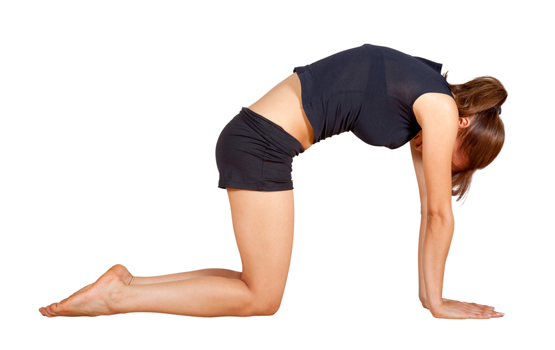
- Start on all fours, with your hands shoulder distance apart and underneath your shoulders, knees hip distance apart and underneath your hips. Press the palms down to the floor, let your middle finger point straight ahead and spread your other fingers outward.
- Lower your shoulders away from your ears, and stretch the back of your head and neck out of your shoulders as you look downward. Elongate your spine so you are in a table top position.
As far as possible keep your elbows straight and your arms and legs stable during the pose. - Become aware of the breath and on an exhalation slowly contract and hollow the abdominal muscles towards the spine, tuck the tailbone and crown of the head and move them towards each other and gaze to the floor between your knees.
- Press firmly downward through the hands so you stay lifted out of your shoulders and let your spine round towards the ceiling. Become aware of every vertebrae moving away from its neighbor creating freedom in the length of the spine. On an inhalation bring the spine back to a neutral table top position.
- Continue moving as many times as you feel comfortable between the two positions synchronizing each movement with your breath. It may be beneficial to rest in child’s pose after ending the sequence.
Dog Pose (Adho Mukha Shvanasana)
Downward facing dog deeply stretches the back, opens the chest, and builds upper body strength. This posture stimulates the brain and nervous system, improving memory, concentration, hearing and eyesight.
- Come to all fours on your hands and knees. Spread the toes.
- Position the shoulders directly above the hands
- Bring the feet hip width apart and slide the knees back behind the hips.
- Plant the palms firmly down and stretch the arms. Spread the palms and lengthen the index fingers and thumbs.
- Exhale and straighten the legs, lifting the hips up and back. If the legs or back are tight and it is not possible to tilt the pelvis forward so that the back does not round, bend the legs slightly. Pull the hips away from the shoulders.
- Pull the thighs and heels back.
- Release the head down.
- Hold this position for several breaths.
- To come out of the pose, exhale, bend the knees and come to the floor.
Half Spinal Twist (Ardha Matsyendrasana)
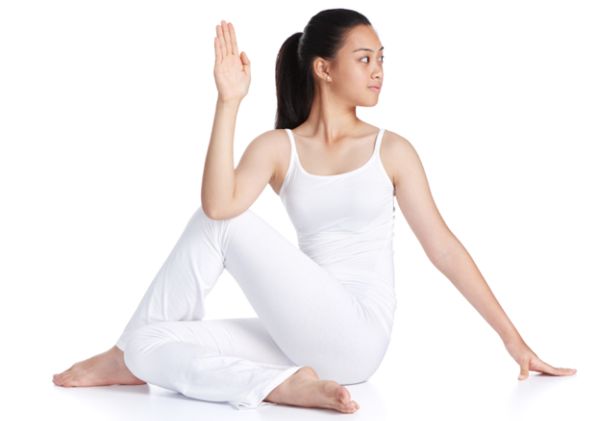
Opens the shoulders, neck, and hips. Stretches the spine. Cleanses the internal organs
- Sit erect.
- Stretch out your legs.
- Place the right heel in the perineum. Keep the right thigh straight.
- Place the left foot flat on the floor, crossing the right knee.
- The left heel should rest close to the right side of the right knee.
- Pass the right arm over the left side of the left knee and line it up with the left calf.
- Grasp the left big toe with the index finger, middle finger and thumb of the right hand.
- Slide the left hand across the small of the back and grasp the root of the right thigh.
- Turn round your head, neck, shoulders and the whole trunk to the left and bring the chin in line with the left shoulder.
- Look as far behind you as you can. Keep the head and spine erect.
- Maintain this position until strain is felt.
- Release in the reverse order.
- Repeat on the other side.
Wind Relieving Pose (Pavanamuktasana)
In the Wind Relieving Yoga Pose, the excess gas would be removed from the stomach and intestines, thus improving the digestive system. This Yoga Pose will also tone and stretch your lower back.
- Lie on the Yoga Mat.
- Raise your left knee.
- Wrap your hands around your left knee.
- Raise your head towards your knee. Breathe, release. Repeat with the right leg. You can also do the rocking motion slowly with rhythm.Remember: While practicing the Wind Relieving Pose, resist the tendency to raise the lower back or buttocks off the ground and try to keep the leg that is on the mat as straight as possible. Aside from releasing unwanted gases from the intestines and stomach, the exercise will also massage the abdominal organs and the rocking motion will get rid of the stiffness in your spine.
Corpse Pose (Savasana)
Allows the body time to process information at the end of a class.

- Come to lie down on the back.
- Let the feet fall out to either side.
- Bring the arms alongside the body, but slightly separated from the body, and turn the palms to face upwards.
- Relax the whole body, including the face. Let the body feel heavy.
- Let the breath occur naturally.
- To come out, first begin the deepen the breath. Then move the fingers and toes, awakening the body.
- Bring the knees into the chest and roll over to one side, keep the eyes closed.
- Slowly bring yourself back up into a sitting position.
Yoga helps to gain control over you health and well-being, however, you should always bear in mind that yoga is not the sole treatment for any ailment. Always seek your physician’s advice before you begin any exercise.
Disclaimer
The Content is not intended to be a substitute for professional medical advice, diagnosis, or treatment. Always seek the advice of your physician or other qualified health provider with any questions you may have regarding a medical condition.

